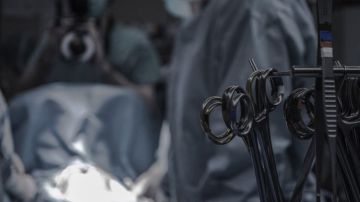‘Snapchat Dysmorphia’ is a New Plastic Surgery Trend and It’s Worrying Doctors
There’s no denying that playing with Snapchat filters and being able to instantly see a different version of yourself is fun, but plastic surgeons are saying that what was meant for fun is turning a lot more serious

Photo: Unsplash/Piron Guillaume
There’s no denying that playing with Snapchat filters and being able to instantly see a different version of yourself is fun, but plastic surgeons are saying that what was meant for fun is turning a lot more serious. An increasing number of patients have reported seeking plastic surgery to look better in selfies, with many requesting to be transformed into their filtered selves.
A 2017 survey from the American Academy of Facial Plastic and Reconstructive Surgery revealed that 42 percent of surgeons had sited selfies and social media as some of the reasons they were considering plastic surgery, an uptick from the previous year. Physicians are referring to this phenomenon as “Snapchat dysmorphia,” and are becoming increasingly concerned with the potential damage having high-tech photo editing features easily accessible can have on self-image and self-esteem.
“The pervasiveness of these filtered images can take a toll on one’s self esteem, make one feel inadequate for not looking a certain way in the real world, and may even act as a trigger and lead to body dysmorphic disorder (BDD),” a recent article in the medical journal JAMA Facial Plastic Surgery by researchers from the Boston University School of Medicine’s Department of Dermatology said. “This is an alarming trend because those filtered selfies often present an unattainable look and are blurring the line of reality and fantasy for these patients.”
According to statistics, plastic surgery rates have increased almost across the board over the past two years, including both invasive procedures like breast augmentations (3 percent rise) and liposuction (5 percent rise) and minimally invasive procedures like Botox (2 percent rise) and soft-tissue fillers (3 percent rise).
The authors of the Boston University study also noted that adolescent girls who alter their photos more tend to overestimate the shape and weight of their bodies and that those suffering from BDD often turn to social media to validate their attractiveness. Almost more disturbingly, surgeons have reported that an increased number of patients are documenting their surgical transformations on social media.
Physicians say the answer for patients suffering from “Snapchat dysmorphia” and/or BDD does not lie in plastic surgery but that psychological interventions and therapies should be considered instead. “Filtered selfies especially can have harmful effects on adolescents or those with BDD because these groups may more severely internalize this beauty standard. It is important for clinicians to understand the implications of social media on body image and self-esteem to better treat and counsel their patients,” said the authors of the study.

















